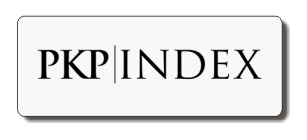PELATIHAN BUDIDAYA RUMPUT LAUT Eucheuma Spinosum PADA MASYAKARAT PESISIR PULAU LEMUKUTAN
Abstract
One fishery commodity that has economic value in trade both nationally and internationally is seaweed. Euchema spinosum belongs to the class of red seaweed (Rhodophyceae) which has great health benefits, because it contains high alginate, carrageenan and fiber, which are very good for digestion and are widely used in the textile, cosmetics, and other industries. E. spinosum also has several very important biological activities such as antioxidants.
Lemukutan Island is a group of islands in the West Kalimantan region with the main livelihood of the population is fishing and farming. E. spinosum naturally grows a lot in the waters of Lemukutan Island. The potential for seaweed development in the area is very large, because in addition to the waters being far from urban or industrial activities so that a well-conditioned aquatic environment is very suitable as a seaweed cultivation center, this area is also shaded and protected so that it is not so affected by high waves from high seas.
This activity aims to improve fishermen's skills while increasing productivity so that it can have an effect on improving the welfare of the farmers. The training was attended by 30 participants who are fish fishermen and seaweed farmers. The cultivation method applied in community service activities at this time is the floating netting method, using bamboo and a net at the bottom of the kerambah so that it protects the seaweed from predators such as fish and turtles. E. spinosum which is cultivated by the community in various ways, such as long line, off-bottom cages, is very risky to the threat of predators and being dragged by currents so that it has the potential to reduce the productivity of seaweed
Keywords
Full Text:
PDFReferences
Anggadiredja, J. T., Zatrika, A., Purwoto, H., & Istini, S. 2006. Rumput Laut: Pembudidayaan, Pengolahan, & Pemasaran Komoditas Perikanan Potensial (2nd ed.). Penebar Swadaya.
Aslan, L. M. 1998. Budidaya Rumput LAut (1st ed.). Kanisius.
Fidyansari, D., dan Anitasari. 2015. Strategi peningkatan produktifitas rumput laut di Daerah Pesisir Pantai Kelurahan Songka Kecamatan Wara Selatan Kota Papolo. Jurnal Perbal, 3(3).
Hardan, H., Warsidah, W., dan Nurdiansyah, I. S. 2020. Laju Pertumbuhan Rumput Laut Kappaphycus alvarezii Dengan Metode Penanaman Yang Berbeda Di Perairan Laut Desa Sepempang Kabupaten Natuna. Jurnal Laut Khatulistiwa, 3(1), 14. https://doi.org/10.26418/lkuntan.v3i1.35101
Mudeng, J. D., dan Ngangi, E. L. . 2014. Pola tanam rumput laut Kappaphycus Alvarezii di Pulau Nain Kabupaten Minahasa Utara. E-Journal BUDIDAYA PERAIRAN, 2(2), 27–37. https://doi.org/10.35800/bdp.2.2.2014.4913
Novyandi, R., Aryawati, R. dan, & Isnaini. 2011. Laju Pertumbuhan Rumput Laut Gracilaria sp dengan Metode Rak Bertingkat di Perairan Kalianda, Lampung Selatan. Maspari Journal : Marine Science Research, 03, 58–62.
Rukisah, Ihsan, B., & Gunawan, A. 2020. Pengaruh Kedalaman Terhadap Pertumbuhan Produksi Serta Warna Rumput Laut (Kappaphycus alvarezii) Di Perairan Pantai Amal Kota Tarakan. Jurnal Agroqua, 18(1), 65–74. https://doi.org/10.32663/ja.v
Sofiana, M. S. J., Aritonang, A. B., Safitri, I., Helena, S., Nurdiansyah, S. I., Risko, Fadly, D., dan Warsidah. 2020. Proximate, Phytochemicals, Total phenolic content and antioxidant activity of ethanolic extract of Eucheuma spinosum seaweed. Systematic Reviews in Pharmacy, 11(8), 228–232. https://doi.org/10.31838/srp.2020.8.34
Sofiana, M. S. J., Yuliono, A., Warsidah, dan Safitri, I. 2021. Journal of Community Engagement in Health Sosialisasi Pemanfaatan Pangan Hasil Laut dan Diversifikasi Olahannya Sebagai Usaha Menanggulangi Stunting Pada Anak Balita di Kalimantan Barat. Journal of Community Engagement in Health, 4(1), 103–112. http://jceh.orghttps//doi.org/10.30994/jceh.v4i1.121
Suparmi, dam Sahri, A. 2009. Mengenal Potensi Rumput Laut : Kajian Pemanfaatan Sumber Daya Rumput Laut Dari Aspek Industri Dan Kesehatan. Sultan Agung, XLIV(118), 95–116.
Susilowati, T., Rejeki, S., Nurcahya, E., & Zulfitriani. 2012. Pengaruh Kedalam Terhadap Pertumbuhan Rumput Laut (Eucheuma cottonii) Yang DiBudidayakan Dengan Metode Longline Di Pantai Mlonggo, Kabupaten Jepara. Jurnal Saintek Perikanan, 8(1), 7–12. https://doi.org/10.14710/ijfst.8.1.7-12
Tiensongrusmee, B. 1990. Site selection for Eucheuma spp. farming. UNDP/FAO Regional Seafarming Development and Demonstration Project (RAS/90/002). Kasetsart University Campus; http://www.fao.org/3/AB738E/AB738E00.htm#TOC
Warsidah, Fadly, D., & Amran, A. 2021. Socialization of the Utilization of Seaweed and Diversification of Its Processes as Functional Food in an Effort to Increase the Immune System during the COVID-19 Pandemic. Mattawang: Jurnal Pengabdian Masyarakat, 2(2), 92–100. https://doi.org/10.35877/454ri.mattawang346
Wijayanto, T., Hendri, M., & Aryawati, R. (2011). Studi Pertumbuhan Rumput Laut Eucheuma Cottonii Dengan Berbagai Metode Penanaman Yang Berbeda Di Perairan Kalianda, Lampung Selatan. Maspari Journal : Marine Science Research, 3(2), 51–57.
DOI: http://dx.doi.org/10.31604/jpm.v5i1.315-323
Refbacks
- There are currently no refbacks.





